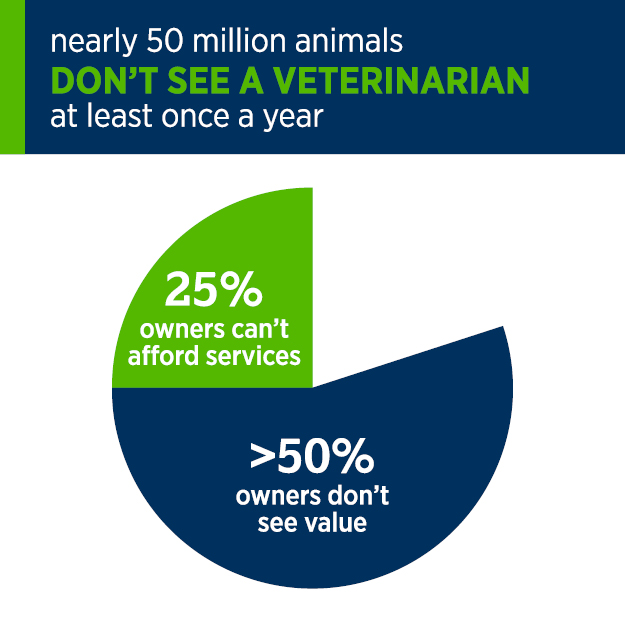Pricing strategy for veterinary practices

In this article:
- See how pricing strategy can contribute to patient care, practice success, and the overall economic health of the veterinary profession.
- Discover the benefits of value-based pricing and how to implement it in your practice.
- Learn the difference between cost-based pricing and value-based pricing.

Value-based pricing can help
With a value-based model, the price of products and services is set according to their value to the customer, rather than the cost to the veterinarian.
The way veterinary practices approach pricing is a critical part of business success. Pricing impacts both our clients’ decisions about their animals’ care, and the financial viability of our businesses.
More broadly, improving how practices price products and services across the whole veterinary profession can help us build a more successful and thriving profession overall.
Stay competitive: Implement value-based veterinary pricing
Helping clients understand value
Price is one of the main reasons why nearly 50 million animals don’t see a veterinarian at least annually. We know this from research in the AVMA’s Pet Demographic and Ownership Sourcebook. Among owners whose pets don’t receive regular care, 25% say they can’t afford veterinary services, and more than 50% don’t see the value in regular veterinary care.
As a profession, veterinarians need to do more to help our clients understand the value of the care we provide to their pets – especially preventive care. Ideally, the worth of our services should far exceed the prices we charge, and we need to help our clients understand why.
Cost vs. value
According to the Veterinary Hospital Managers Association (VHMA), about 40% of veterinarians set prices based on how much a service costs them to provide. About 80% use this approach to price the products they sell.
The problem with cost-based pricing is that it artificially limits how clients understand the value of the products and services provided. In reality, clients don’t care what our costs are. They care about the tangible value in the services and products we provide to them and their animals.
Value-based pricing demonstrates to clients the real worth of the products and services they receive from their veterinarian.
4 steps to value-based pricing
Fortunately, value-based pricing doesn’t have to be difficult to implement. The Harvard Business Review (HBR) offers a quick guide to value-based pricing that we can easily adapt to the veterinary market. It boils down to four steps:
- Focus on a single market segment. This means you must identify who your clients and potential clients are. HBR uses the example of a brand that focuses only on big-screen TV buyers, not all TV buyers. The more specific you can be, the better.
- Compare your offerings with those of your next-best competitor. Ask yourself where your clients likely would go for veterinary services if your practice wasn’t an option. Focusing on the “next best” helps you zero in on the true point of comparison.
- Understand what makes you different. Identify what makes your practice unique in your area. Those special features are what differentiate you from your competitors.
- Place a dollar amount on what differentiates your practice. This is the most challenging part, and it may take some trial and error to hit on your sweet spot. For example, if you offer “complimentary” nail trims with all well-pet visits, and your competitors don’t, you must decide how much this convenience is worth to your clients, and then build it into your exam fees.
Another strategy: Bundled and preferred pricing
Your practices also might want to experiment with bundled and preferred pricing. Both can help enhance the way clients perceive the value you provide.
With bundled pricing, several products or services are combined and sold as a group for a reduced price. Despite the fact that the items are sold at discounted prices, bundled pricing can boost overall revenue – and pet health – by encouraging clients to expand the care their pets receive. One example might be to offer a reduced price on dental services with the purchase of a wellness plan.
Preferred pricing is similar and also addresses the human desire to save money, which people will actually sometimes pay a premium to achieve. With preferred pricing, the purchaser may receive a discount as a reward for previous purchases or an incentive for later ones. One example is for practices to offer a promotional deal on vaccines to existing clients.
Communicating about price: A team effort
Pricing conversations with clients can be sensitive, so it’s important to have a communication strategy in place. It’s a good idea to include other staff and team members in developing this strategy. Not only will they be able to offer a different viewpoint; many of them will be the ones having the pricing discussions with clients at the time of service.
Some points to keep in mind when building a communication plan with your team:
- The way we price products and services - and how we talk with clients about pricing - should align with the practice’s mission and brand. Consider how different options (for example, bundling vs. pricing each item individually) play into the practice’s overall business goals.
- Any communication with clients - especially when it comes to cost - should be clear. Try not to leave any room for misunderstanding.
- Helping clients understand the value of the veterinary team’s work should be central to the conversation.
Get guides to best practices
VHMA offers tools to help you understand and implement value-based pricing in your practice.
Profit and loss calculator
This simple tool turns your P&L statement into a powerful source of insight to drive increased efficiency and innovation.